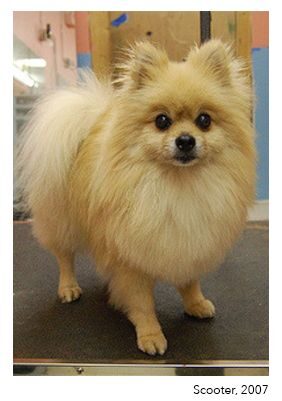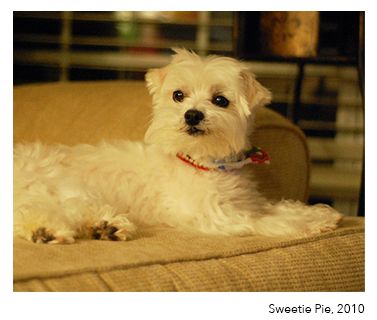Let me preface this by saying I love my veterinarian. I have more than a few dogs who wouldn’t be alive if not for the diligent caring of my vet, who has been in our pet family for more than 20 years. He’s a good doctor and a good man and I will be devastated when he retires.
However, where nutrition is concerned, we stand on opposite sides of a huge divide. My vet trusts and respects me as much as I trust and respect him, so we decided to agree to disagree. He wouldn’t try to sell me Science Diet and I wouldn’t flaunt my raw feeding in his face.
In 2012, the American Veterinary Medical Association passed a “resolution” discouraging pet owners from feeding raw or undercooked food to their pets, citing concerns about salmonella. Traditional vets follow this resolution and now raw-feeding is met with suspicion and disapproval from veterinary professionals. This includes my own veterinarian.
As much as I credit my vet with the health of my pets, I have also personally witnessed firsthand the benefits of a raw diet. My experience with commercially prepared raw food diets has made me a believer and these are a few of my stories.

Scooter
Scooter was a 10 year old Pomeranian when he was diagnosed with congestive heart failure and an enlarged heart. He was on Lasix and Enacard until the day he died which, incidentally, had nothing to do with his health conditions.
At the age of 12 Scooter had to go to the emergency vet for lack of appetite and listlessness. What they found was that his food - high-quality kibble - had turned to concrete in his stomach. The lasix meant he was not taking in enough moisture to keep up with the output and he was so dehydrated he couldn’t process his food.
The next step was, to me, a no-brainer. He came home and went on raw medallions from Instinct and his life transformed. He was energetic and ate with gusto. His sassy attitude returned and he was happy and playful to the end of his days.

Bonaparte
Bonaparte was born in 2006. He is a Briard and he’s quite tall and long. However, as a young dog, he didn’t have much of an appetite.
He would eat a fraction of the recommended feeding amount and 60lb on his big frame made him look gaunt and drawn. He also had a terribly itchy face. Not his paws, not his body, but his face. He would tear at once side of his nose with his back foot, breaking the coat and leaving red marks on the skin below.
By the age of 2, I couldn’t watch him torment himself any longer and I began to make changes to his diet to 1) increase his weight and 2) fix his face itching. After long months of experimentation I tried a raw diet.
For his size, Bonaparte was eating 2lbs of raw food a day. Economically my best choice was Bravo chubs and I was spending about $6 a day feeding him. After about a year, my rail-skinny, scrawny 60lb Briard topped out at almost 80lb of lean muscle. He stopped tearing at his face and his coat grew to be a whopping 12” - 16” long.
The raw diet unlocked his appetite and now he’s a very good eater and as a senior dog, he maintains his weight in the 70 - 75lb range.

Sweetie Pie
Sweetie is a rescue Maltese. She was between 7 and 10 years old when we adopted her from a rescue in Mena. Due to a hard life and poor nutrition, Sweetie had to have most of her teeth removed.
Unused to eating out of a bowl, Sweetie would dump her food before she would consume it. She had never seen grass or spent much time outside of her chicken wire crate.
Her feet were deformed from the wire she lived on for years. Her white coat was stained brown and was so sparse you saw more pink skin than white hair. She was…well…sort of ugly and pathetic. But my grandmother loved her and we figured she would last a year or two and keep my grandma company.
After my experience with Scooter, I started Sweetie on raw food immediately. She started with Instinct Medallions and now she does the Primal Nuggets. She filled out nicely, her coat grew in and now 8 years later she is still with us (which, if you math, means she is between 15 and 18). She too has the heart problems that come with age but she’s still going strong.

Disney
Most recently, I acquired a young Briard who was diagnosed with a serious fungal infection. So serious, he lost his eye in an effort to diagnose him.
While on prednisone, he had a great appetite and was able to put on a few much-needed pounds that he lost while the fungus ravaged his body. Without the steroids, though, his appetite went into the toilet. He had no interest in his food, not even with eggs and cottage cheese added. He would take one look and walk away.
I turned to my old friend the raw diet, starting with a few of Sweetie’s nuggets, and Disney ate! The infection means he has good days and bad, and he’s on some pretty powerful medication. It’s very important to keep weight on him during his treatment and it seems that raw diet is going to be an important part of making that happen.
In the end, it’s true that raw feeding may not be for everyone. It’s expensive, it’s inconvenient and it’s time-consuming. And just like handling raw meat for humans, you must exercise caution when you have raw food around. You have to wash and disinfect your work surface as well as the bowls used for feeding.
However, in some instances, raw food has been a literal lifesaver for us. If your pet is dealing with health issues like allergies, joint pain, obesity, bladder problems, significant weight loss, diabetes, etc and you’re at the end of your rope, maybe it’s time to give raw food a try.
